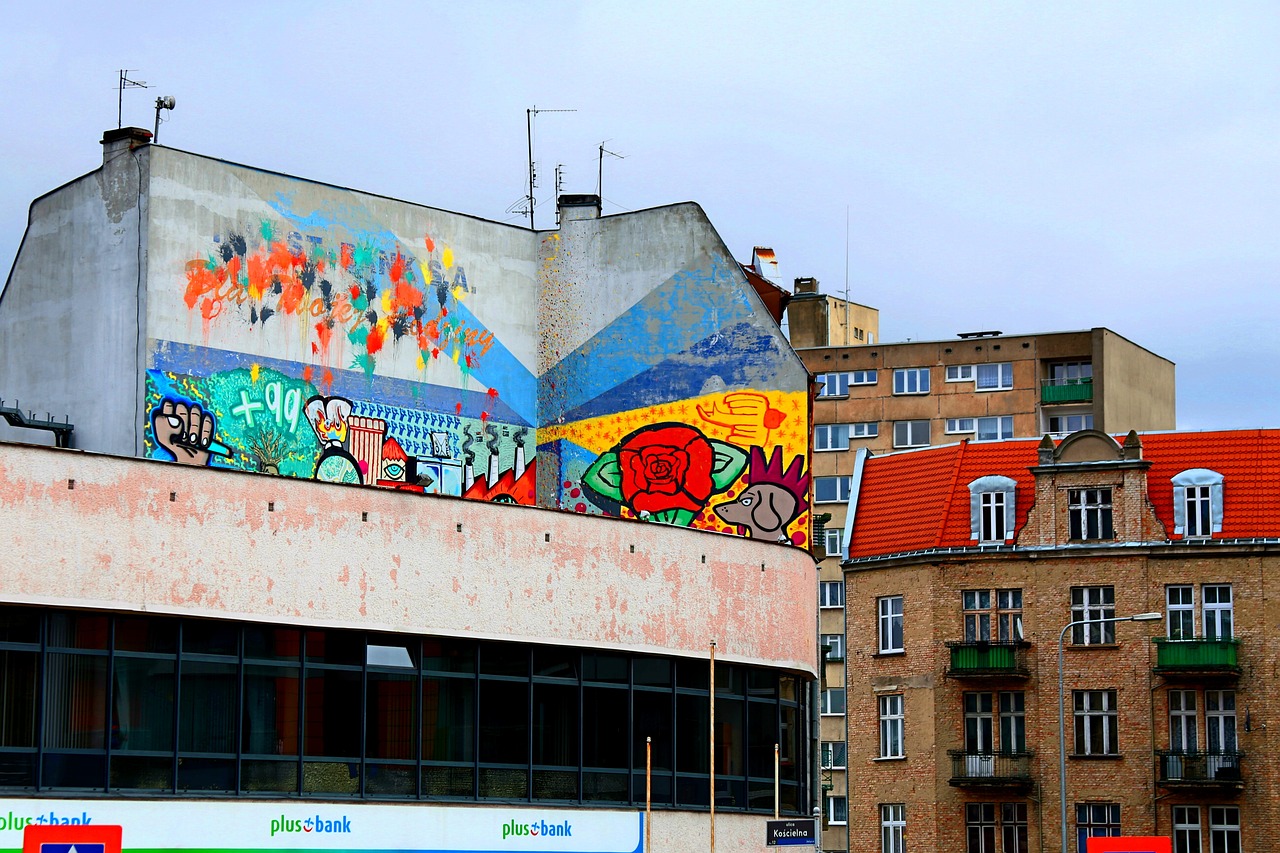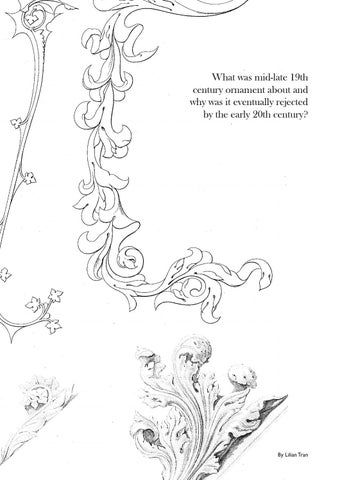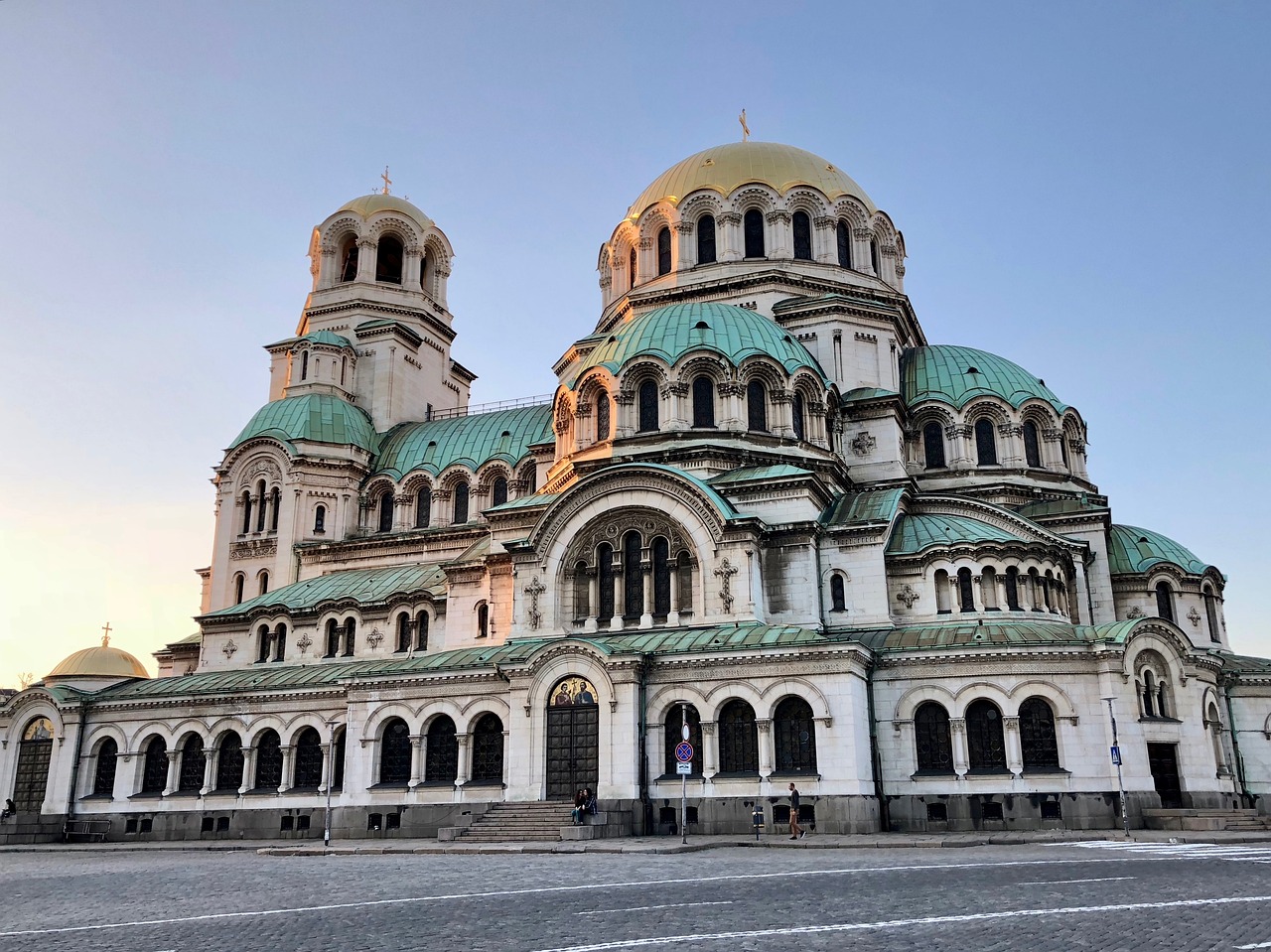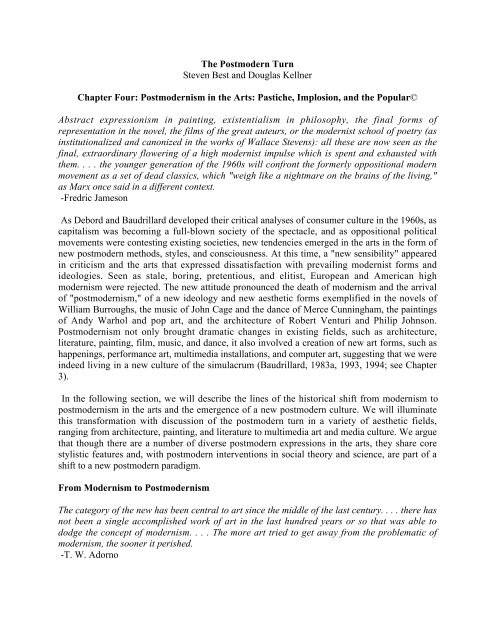Table of Contents
In the realm of design and architecture, the postmodern movement emerged as a bold departure from the stark minimalism of the mid-20th century. Postmodernism welcomed a revival of ornamentation and narrative, challenging the prevailing notion that “less is more.” In this article, we will delve into the essence of Postmodernism, its historical context, and the reemergence of ornament and narrative in contemporary design.
nullFor a comprehensive look at this subject, we invite you to read more on this dedicated page: LOS ANGELES CITYWIDE HISTORIC CONTEXT STATEMENT …
I. The Rise of Postmodernism
Postmodernism, as a design philosophy, gained momentum in the late 20th century as a reaction to the perceived coldness and rigidity of modernism. Architects and designers began to question the limitations of minimalism and the absence of historical context in modern design.
Postmodernism, as a design philosophy, gained momentum in the late 20th century as a reaction to the perceived coldness and rigidity of modernism. Architects and designers began to question the limitations of minimalism and the absence of historical context in modern design. This movement marked a significant shift in the world of architecture and design, introducing a wave of creativity and eclecticism that celebrated diversity, individuality, and cultural richness.
Embracing Pluralism: Postmodernism welcomed a pluralistic approach to design, where multiple styles, influences, and historical references coexisted harmoniously. Unlike modernism’s strict adherence to a single, universal aesthetic, postmodern buildings and interiors celebrated diversity. This approach allowed architects and designers to draw inspiration from various periods, cultures, and artistic movements, resulting in a rich tapestry of design possibilities.
Historical References: One of the most distinctive features of postmodern design is its incorporation of historical references. Buildings and spaces were adorned with elements borrowed from the past, such as classical columns, arches, and ornate decorations. These historical references served not only as decorative elements but also as a way to establish a sense of connection to architectural traditions and cultural heritage.
Playfulness and Wit: Postmodern design introduced an element of playfulness and wit into architecture and interiors. Architects used unexpected juxtapositions, exaggerated forms, and unconventional materials to create visually engaging and often humorous spaces. This lighthearted approach challenged the seriousness of modernism and invited viewers to question preconceived notions about design.
Contextualism: Unlike modernist buildings, which often appeared as standalone structures, postmodern architecture embraced contextualism. It sought to harmonize with its surroundings, responding to the site’s history, culture, and environment. This approach resulted in buildings that felt more integrated into their urban or natural landscapes.
Cultural Expression: Postmodernism celebrated cultural expression and regional identity. Architects and designers drew inspiration from local traditions, folklore, and art, infusing their work with a sense of place and cultural significance. This emphasis on cultural expression allowed for a deeper connection between people and their built environment.
Rejection of Universalism: Postmodernism challenged the notion of universal design principles. Instead of adhering to a one-size-fits-all approach, designers recognized the importance of tailoring their work to the specific needs and preferences of diverse users. This user-centered approach contributed to the creation of more inclusive and accommodating spaces.
Continued Evolution: Postmodernism continues to evolve in the 21st century, with architects and designers exploring new ways to blend the old with the new, the global with the local, and the traditional with the contemporary. This ongoing evolution reflects the enduring relevance and adaptability of postmodern design principles.
In summary, postmodernism emerged as a vibrant and eclectic response to the perceived limitations of modernism. It celebrated diversity, historical context, and individual expression, ushering in an era of design that values inclusivity, creativity, and a deep connection to culture and history. As we navigate the complexities of the modern world, postmodernism reminds us that design can be a powerful means of expressing our individuality while celebrating the rich tapestry of human experience.
For additional details, consider exploring the related content available here LOS ANGELES CITYWIDE HISTORIC CONTEXT STATEMENT …

Ornamentation
Postmodernism celebrated the return of ornamentation, incorporating decorative elements like arches, columns, and intricate patterns. This revival of ornament was a departure from the austere lines of modernism.
Postmodernism marked a significant departure from the strict minimalism and functionalism of modernism, embracing a return to ornamentation with open arms. It’s in this celebration of embellishments that we witness a vibrant resurgence of architectural diversity and historical references, breathing new life into the built environment.
In the postmodern architectural landscape, the inclusion of decorative elements was not merely an aesthetic choice; it was a deliberate shift in philosophy. Architects, inspired by a desire to reestablish a sense of identity and place in an increasingly globalized world, turned to ornamentation as a means of storytelling. Elements such as arches, columns, and intricate patterns became tools to convey cultural narratives and historical connections.
Architectural ornamentation in postmodernism went beyond mere decoration; it became a language of symbolism and meaning. Arches, reminiscent of classical antiquity, were not just structural supports but signifiers of tradition and continuity. Columns, with their various orders, served as reminders of architectural history, bridging the past and present. Intricate patterns and motifs drawn from diverse cultures added layers of complexity and visual interest, fostering a sense of inclusivity and diversity.
The revival of ornamentation in postmodernism also brought about a renewed focus on human scale and comfort. Spaces became more welcoming and humane, with a greater emphasis on user experience. Ornamentation wasn’t just applied to facades but also found its way into interior design, creating immersive environments that engaged the senses and encouraged exploration.
Postmodern architecture’s celebration of ornamentation also allowed for a more playful and whimsical approach to design. Architects embraced a sense of irony, humor, and self-reference, challenging the seriousness of modernism. This postmodern eclecticism welcomed juxtapositions and contradictions, inviting viewers to question, reflect, and engage with the built environment in new and unexpected ways.
In essence, postmodernism’s return to ornamentation represented a rich tapestry of influences and ideas. It allowed for a more inclusive and culturally diverse architectural vocabulary, fostering a sense of place and belonging in an increasingly interconnected world. It was a celebration of the human spirit’s need for storytelling, expression, and identity through architecture, ultimately redefining the boundaries of design and pushing the field in exciting and thought-provoking directions.
If you’d like to dive deeper into this subject, there’s more to discover on this page: Unit 5 (chapter 22) History of Graphic Design Flashcards | Quizlet

Historical References
Postmodern architecture and design drew inspiration from historical styles and references. It playfully integrated elements from different periods, creating a visual dialogue with the past.
Postmodern architecture and design represent a spirited departure from the rigidity of modernism. This movement is characterized by its playful and often whimsical approach to architecture, drawing inspiration from a vast array of historical styles and references. In doing so, it engages in a vibrant and visually intriguing dialogue with the past while embracing the possibilities of the present and the future.
One of the defining features of Postmodernism is its eclecticism. Architects and designers reveled in the freedom to borrow and blend elements from diverse architectural traditions. Classical columns might support an asymmetrical facade, or ornate cornices might frame a sleek glass curtain wall. These juxtapositions challenged the dogma of modernism, where a strict adherence to functionalism and minimalism had prevailed. Instead, Postmodernism celebrated the rich tapestry of architectural history and recognized that design could be a form of storytelling.
Postmodern architects often used humor and irony as design tools, injecting buildings with a sense of playfulness and cultural commentary. This irreverence towards established norms allowed for the creation of iconic structures that resonated with the public on multiple levels. An excellent example is the Piazza d’Italia in New Orleans, designed by Charles Moore, which features a mishmash of classical columns, neon signs, and pop art elements. It’s a space that simultaneously pays homage to architectural history and winks at contemporary culture.
Historical references in Postmodern design weren’t limited to architectural elements alone. Interior spaces, furniture, and even everyday objects became canvases for experimentation. The Memphis Group, a design collective founded in the 1980s, exemplified this approach by creating furniture that featured bold colors, geometric patterns, and playful forms. Their work challenged the boundaries of conventional design, infusing everyday life with a sense of whimsy.
Postmodernism was not just about aesthetics; it was also a response to the shifting cultural and intellectual landscape. It questioned the notion of a singular, universal truth and embraced pluralism and diversity. This is evident in its approach to architecture, where multiple styles and references coexist harmoniously within a single structure. The movement recognized that our world is a complex, multifaceted place, and architecture should reflect this complexity.
In conclusion, Postmodern architecture and design represent a departure from the austere minimalism of modernism. Instead, it invites us to explore the myriad possibilities of design by playfully engaging with history, culture, and context. By weaving a rich tapestry of references, Postmodernism creates buildings and spaces that are not only visually stimulating but also intellectually engaging. It reminds us that design can be a celebration of diversity, a reflection of our ever-evolving cultural landscape, and a source of delight and surprise in our built environment.
To delve further into this matter, we encourage you to check out the additional resources provided here: LOS ANGELES CITYWIDE HISTORIC CONTEXT STATEMENT …

Narrative and Symbolism
Postmodernism introduced storytelling and symbolism into design. Buildings and interiors often conveyed meaning and cultural references, inviting viewers to interpret and engage with the space.
nullDon’t stop here; you can continue your exploration by following this link for more details: POSTMODERNISM

Color and Contrast
Vibrant colors and bold contrasts were embraced, adding a sense of drama and playfulness to architectural and design compositions.
Vibrant colors and bold contrasts played a pivotal role in reshaping architectural and design landscapes, injecting them with an exhilarating sense of drama and playfulness. This daring departure from the more subdued palettes of earlier eras marked a profound shift in creative expression.
In the world of architecture, colorful facades became a canvas for architects to make bold statements and engage with their surroundings. Buildings adorned with vibrant hues seemed to come alive, inviting passersby to stop and appreciate the architectural spectacle before them. Bold contrasts in color, such as bright primary colors set against stark whites or deep blacks, created dynamic visual compositions that commanded attention.
These vivid architectural choices not only transformed the urban landscape but also transformed the way people experienced and interacted with their surroundings. The use of color and contrast became a means of navigating and identifying with the built environment, turning cityscapes into vibrant, expressive canvases.
In interior design, the incorporation of bold colors and contrasts allowed for the creation of spaces that were not just functional but emotionally charged. Bold color choices on walls, furnishings, and decor elements infused rooms with energy and personality. It wasn’t merely about aesthetics; it was about creating an atmosphere that could evoke joy, excitement, or a sense of whimsy.
Moreover, the playful use of color and contrast challenged the traditional norms of design, encouraging designers to think outside the box and experiment with unexpected combinations. It opened up new possibilities for creativity, inspiring designers to push boundaries and defy conventions.
Beyond aesthetics, the embrace of vibrant colors and bold contrasts also reflected cultural shifts. It signaled a departure from the rigidity and conformity of the past, embracing individuality, self-expression, and a celebration of diversity. These choices resonated with a society that was increasingly open to embracing change and celebrating differences.
In conclusion, the incorporation of vibrant colors and bold contrasts in architecture and design was a transformative moment in the creative world. It added a sense of drama, playfulness, and vitality to the built environment. These daring choices not only altered the visual landscape but also reflected the evolving cultural values and the desire for self-expression and individuality. Today, the legacy of this design philosophy continues to inspire architects and designers to infuse their work with a sense of vibrancy and creativity, reminding us that the world of design is a dynamic and ever-evolving canvas for innovation and self-expression.
Should you desire more in-depth information, it’s available for your perusal on this page: Untitled

III. Iconic Examples
Notable examples of Postmodern architecture include Michael Graves’ Portland Building in Oregon, Philip Johnson’s AT&T Building in New York City (now known as 550 Madison Avenue), and Robert Venturi’s Vanna Venturi House. These structures embodied the movement’s rejection of minimalism and its embrace of historical and ornamental elements.
Postmodern architecture marked a departure from the austere simplicity of its Modernist predecessor, embracing a rich tapestry of historical references and ornamental details. Let’s delve further into these iconic structures that exemplified the Postmodern movement:
The Portland Building by Michael Graves: Michael Graves’ design for the Portland Building in Oregon stands as a vibrant example of Postmodernism’s departure from minimalism. Its colorful and ornamental facade, featuring playful motifs and classical columns, boldly defied the starkness of Modernist architecture. The building became a symbol of Postmodernism’s celebration of historical forms and ornamentation, igniting conversations about the role of decoration in contemporary design.
Philip Johnson’s AT&T Building (550 Madison Avenue): Philip Johnson’s AT&T Building, now known as 550 Madison Avenue, was a striking departure from the glass-and-steel skyscrapers that dominated the New York City skyline. This monumental structure featured a neo-Chippendale crown, complete with ornate detailing and pediments, which was a sharp contrast to the sleek uniformity of Modernist skyscrapers. The building challenged the prevailing notions of corporate architecture, sparking debates about the fusion of classical elements with modern design.
Robert Venturi’s Vanna Venturi House: Robert Venturi’s Vanna Venturi House is often hailed as a quintessential example of Postmodern architecture. This residential masterpiece challenged the Modernist mantra “less is more” with its playful incorporation of historical elements. Its gabled roof, oversized keystones, and fragmented facade subverted the conventions of minimalism. The Vanna Venturi House became an architectural manifesto, declaring that architecture could be both functional and whimsical, both contemporary and deeply rooted in history.
Reinterpretation and Playfulness: What set these Postmodern structures apart was their reinterpretation and playful engagement with historical architectural elements. They questioned the notion that modern design should reject ornamentation and historical references in favor of stark simplicity. Instead, they celebrated eclecticism, blending classical forms, whimsical details, and contemporary functionality.
Complexity and Context: Postmodernism embraced complexity and context. It recognized that architectural design could be a rich dialogue with history and culture, responding to the specific needs and identity of a place. This approach challenged the universalism of Modernism and celebrated diversity.
Legacy and Influence: The legacy of these iconic Postmodern structures extends beyond their physical presence. They ignited a movement that influenced a new generation of architects and designers. Postmodernism’s emphasis on context, historical references, and ornamentation has left an indelible mark on contemporary architecture, inspiring a return to complexity and an appreciation for the rich tapestry of design history.
In conclusion, notable examples of Postmodern architecture, such as the Portland Building, 550 Madison Avenue, and the Vanna Venturi House, embodied the movement’s rejection of minimalism and its embrace of historical and ornamental elements. These structures challenged the prevailing norms of their time and continue to inspire architects and designers to explore the dynamic interplay between tradition and innovation in the built environment. Postmodernism’s legacy reminds us that architecture can be a canvas for a diverse and playful exploration of form, history, and context.
You can also read more about this here: POSTMODERNISM

IV. Contemporary Resurgence
In recent years, we have witnessed a resurgence of Postmodern principles in contemporary design. Architects and designers are once again exploring the richness of ornamentation, historical references, and narrative in their work. This revival challenges the prevailing notion of minimalism and offers a fresh perspective on design.
“In recent years, there has been a remarkable resurgence of Postmodern principles in contemporary design, marking a departure from the predominant trends of minimalism and a return to the celebration of ornamentation, historical references, and narrative in architectural and artistic work. This revival represents a dynamic shift in the design landscape, challenging the notion that simplicity and restraint are the only paths to modernity and offering a refreshing perspective on the role of design in our lives.
Postmodernism, with its emphasis on juxtaposing historical elements and eclectic references, presents a bold departure from the purist ideals of minimalism that have dominated design in recent decades. Architects and designers are once again embracing the richness of ornamentation, drawing inspiration from diverse architectural traditions, and weaving intricate narratives into their creations.
One of the striking aspects of this resurgence is the creative use of ornamentation. After a period where decoration was often considered excessive, designers are now employing ornamentation as a means of enriching the visual experience. Intricate patterns, vibrant colors, and diverse textures are being reintroduced into architectural and interior designs, rekindling an appreciation for the power of detail and craftsmanship.
Historical references play a pivotal role in contemporary Postmodern design. Architects and artists are revisiting architectural styles of the past, from classical Greek and Roman motifs to Gothic and Renaissance influences, infusing their work with a sense of timelessness and cultural resonance. This dialogue with history not only adds depth to design but also invites viewers to connect with the rich tapestry of human creativity across the ages.
Narrative, too, has made a compelling return to the forefront of design. Contemporary creations are imbued with stories, whether inspired by local traditions, cultural heritage, or personal experiences. These narratives add layers of meaning and authenticity to design, fostering a deeper connection between the built environment and its inhabitants.
The revival of Postmodern principles challenges the monolithic nature of minimalism and emphasizes the value of diversity and individuality. It underscores the idea that design is not a one-size-fits-all endeavor but a multifaceted exploration of form, function, and meaning. This shift encourages designers to break free from constraints and embrace a more inclusive, eclectic, and human-centered approach.
In essence, the resurgence of Postmodernism in contemporary design signifies a return to the celebration of complexity, diversity, and narrative in the world of art and architecture. It reminds us that design is a dynamic, ever-evolving field that thrives on innovation, reinterpretation, and a constant dialogue with the past. As we witness this revival, we are invited to explore the boundless possibilities of design, where history, ornamentation, and narrative intertwine to create spaces and objects that resonate with the human spirit and enrich our lives.”
To expand your knowledge on this subject, make sure to read on at this location: Unit 5 (chapter 22) History of Graphic Design Flashcards | Quizlet

V. The Power of Playfulness
Postmodern Playfulness, as we can call it, invites us to reevaluate our understanding of design aesthetics. It emphasizes that ornamentation and narrative are not superfluous but essential elements that enrich our built environment. This return to playful design principles reminds us that architecture and design can engage our senses, emotions, and intellect in ways that minimalism alone cannot.
nullExplore this link for a more extensive examination of the topic: Metaverse beyond the hype: Multidisciplinary perspectives on …

Postmodernism’s return of ornament and narrative marks a departure from the sterile lines of modernism and offers a vibrant, engaging, and thought-provoking approach to design and architecture. In the 21st century, as designers continue to explore the boundaries of creativity, the Postmodern Playfulness movement serves as a reminder that design can be a dynamic and evolving conversation between the past, present, and future—an exploration of the richness of human experience and expression.
Postmodernism, with its embrace of ornamentation and narrative, represents a significant shift in the world of design and architecture, departing from the stark minimalism of modernism. This return to richness and complexity in aesthetics brings with it a renewed sense of vitality and intellectual depth to the creative process.
In the 21st century, as designers and architects explore the ever-expanding boundaries of creativity, the influence of Postmodernism continues to resonate. The Postmodern Playfulness movement, which is an extension of Postmodernism, rekindles the spirit of experimentation and eclecticism. It invites us to view design as more than just a functional endeavor but as a dynamic and evolving conversation.
Postmodern Playfulness encourages us to rethink the rigid categories of the past and to embrace a more holistic view of design. It’s a movement that reminds us that design is not a static set of rules but a fluid exploration of the past, present, and future. It prompts us to look at design as an art form that reflects the richness and diversity of human experience and expression.
In the realm of architecture, this movement often manifests as a fusion of different styles, materials, and cultural influences. Architects are no longer confined to a single design language but are free to draw from a vast palette of historical references and contemporary innovations. The result is a built environment that is engaging, surprising, and deeply connected to the human experience.
Furthermore, Postmodern Playfulness encourages designers to incorporate narrative elements into their work. This storytelling aspect adds layers of meaning and depth to design, inviting viewers and users to engage on a more emotional and intellectual level. Spaces and objects become not just functional but also evocative, sparking conversations and reflections.
In essence, the Postmodern Playfulness movement challenges the notion that design should be purely utilitarian or conform to a particular aesthetic doctrine. Instead, it celebrates the idea that design is a form of artistic expression, a playful exploration of ideas, and a reflection of the ever-evolving human condition. It encourages us to embrace the vibrant diversity of design possibilities and to see beauty in the complex interplay of forms, textures, and narratives. In doing so, it reminds us that design is not just about functionality but about enriching our lives, stimulating our minds, and inspiring our imagination.
To delve further into this matter, we encourage you to check out the additional resources provided here: Art Nouveau Movement Overview | TheArtStory
More links
For additional details, consider exploring the related content available here Unit 5 (chapter 22) History of Graphic Design Flashcards | Quizlet
